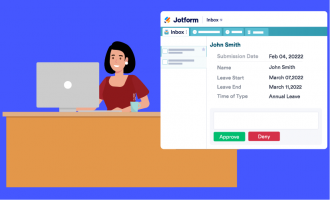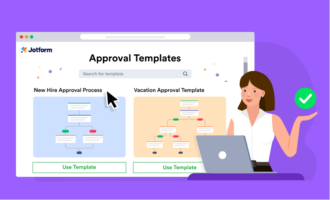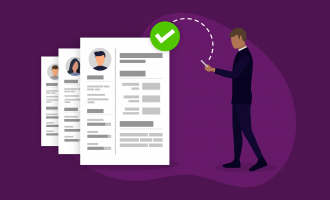Chances are, you’ve put careful thought into your employee onboarding process for new hires, but it’s equally important to address your employee offboarding process.
An employee’s departure can be difficult, but having a checklist and a plan in place ensures that by the time your employee’s last day arrives, your HR department will have covered all of the important elements of offboarding an employee.
The HR employee offboarding checklist
If an employee leaves, your human resources department can use this checklist to ensure a smooth and thorough offboarding process.
Work with the employee to plan their departure
When an employee submits their letter of resignation, thank them for giving you notice and confirm their end date. This end date gives you a timeline to work with, and it can help you create an offboarding experience that makes a good last impression on the employee.
If there’s a chance you would want to hire the employee again in the future, it’s particularly important to try to stay on good terms with them. Former employees sometimes return to their previous employers, so focus on keeping things professional in case you ever want to bring them back.
Once you’ve received the employee’s resignation, communicate their departure to their team and across your business. This open line of communication helps prevent rumors from starting and makes your current employees feel valued.
Get details about responsibilities
It’s important to get details about the employee’s responsibilities. In some cases, their supervisor may be able to provide you with this information, but it’s always best to have the employee involved in the process to ensure accuracy.
Ask about the employee’s responsibilities, any important passwords they use, how they work within their team and the organization as a whole, and which of their responsibilities you may need to prioritize or address for a smooth transfer.
If the employee who is leaving is responsible for overseeing processes, it’s important to get a record of those processes and request any available documentation for them.
If those processes require approvals, then this is the time to set up an approval process to ensure that someone is tracking those approvals, even once the employee is no longer with your business.
You can set up an approval process with Jotform Approvals. Just start with a form to collect submissions and build an approval flow that you can easily track and manage.
Conduct an exit interview
Conduct an exit interview to get feedback on how you could improve your business and build a better employee experience. Consider having an HR professional conduct the interview, especially if the employee has indicated that their manager or supervisor has played a role in their decision to leave.
During the interview, the employee should be prepared to return any company assets or company property, like a cell phone, a building access card, or company credit cards. This is also an appropriate time to revoke the employee’s access to systems like the company website, database, email, and so on.
Conduct an exit survey
In addition to or in place of an exit interview, an exit survey can be a helpful way to get honest feedback about how your business performs as an employer. Asking questions about the employee’s experience, what your business does well, and where support or guidance may be lacking can help you identify areas that need adjustments to improve employee retention.
Once you gather this feedback through an exit survey, you need to put it to use.
It’s not difficult to design or conduct an exit survey. You can easily create the survey on Jotform with the exit survey template. The template is already populated with some great questions, but you can further customize it to your needs. Once you’ve created the survey, you can share it with the departing employee via email or on your website, and they can complete it digitally.
Tie up the last details
When an employee leaves, make sure that they’ve removed all of their personal belongings. Remember to remove them from your payroll system and address any changes to their benefits enrollment.
Plan for the offboarding process
When your HR department has a thorough and professional exit process, you can make each employee’s exit a smooth experience for everyone involved. Having a checklist makes the offboarding process easier for HR professionals and allows your business to continue its operations as normal, even without that employee.
If you haven’t yet created an exit process checklist, now’s the time to put one together so you’re prepared when an employee resigns.
Want the full rundown on the topic? Check out the complete guide we created on human resource management.











































Send Comment: